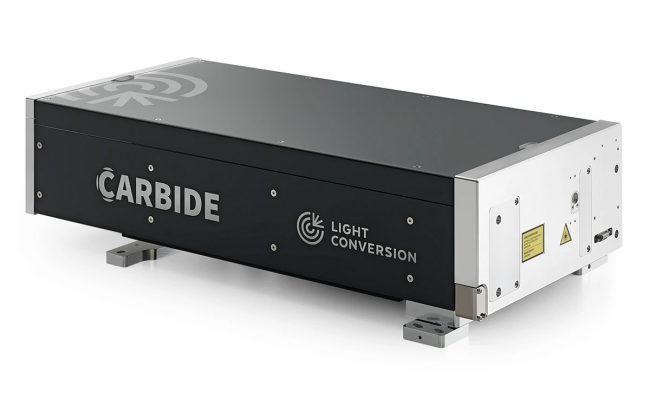The flash photolysis experiment is designed for measuring long-lived states of molecular systems. It is extensively used to study light-induced processes in organic molecules, polymers, nanoparticles, semiconductors, as well as photosynthesis and light-induced conformational changes in plants and other biological systems.
The principle of flash photolysis is analogous to the femtosecond transient absorption (TA) experiment but with the delay in a nanosecond–microsecond range. In the femtosecond TA, the delay between pump and probe pulses is varied by moving the mechanical delay stage, while in flash photolysis, the delayed probe pulse is obtained from an electronically triggered external probe laser.
HARPIA-TA spectrometer offers an optional flash photolysis extension. Exceptional optical stability of PHAROS or CARBIDE lasers, reduction of electronic jitter, and tedious analysis of experimental data allow measuring the flash photolysis signals with sub-10 ns temporal resolution.
- 100 fs – 20 ps 连续可调脉宽
- 最大单脉冲能量 4 mJ
- 最小脉宽输出 < 100 fs
- POD 和 BiBurst 功能
- 高达 5 次谐波或可调谐扩展
- CEP 稳定或重复频率锁定
- 热稳定性和密封设计
- 190 fs – 20 ps 连续可调脉宽
- 最大输出 1 mJ @ 120 W 或 2 mJ @ 80 W
- 单脉冲 – 2 MHz 重复频率
- POD 和 BiBurst 功能
- 高达 5 次谐波或可调谐扩展
- 风冷型号
- 紧凑的工业级设计
2D matrix engineering for homogeneous quantum dot coupling in photovoltaic solids
J. Xu, O. Voznyy, M. Liu, A. R. Kirmani, G. Walters, R. Munir, M. Abdelsamie, A. H. Proppe, A. Sarkar, F. P. G. de Arquer et al., Nature Nanotechnology 6 (13), 456-462 (2018).




